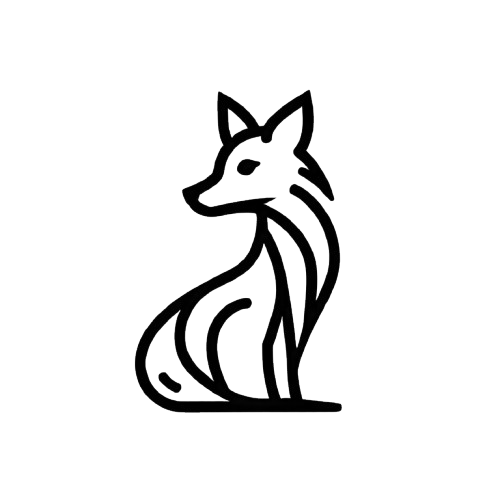I found Meta's 5 criteria for the product sense interview. They're surprising. Let's break them down: Reminder... this is the interview where they ask questions like: • Improve ChatGPT. • How would you differentiate Reels from TikTok? • What's your fave product? How would you improve it? And why should you care about Meta related to this? Meta originated product sense interviews back in '08. Their criteria have propagated to the rest of the industry. I saw similar one's when I worked at Affirm and Apollo. — Here's the details: 𝗖𝗿𝗶𝘁𝗲𝗿𝗶𝗮 𝟭 — 𝗨𝗻𝗱𝗲𝗿𝘀𝘁𝗮𝗻𝗱𝗶𝗻𝗴 𝘁𝗵𝗲 𝗽𝗿𝗼𝗱𝘂𝗰𝘁 𝗹𝗮𝗻𝗱𝘀𝗰𝗮𝗽𝗲 𝗮𝗻𝗱 𝗺𝗼𝘁𝗶𝘃𝗮𝘁𝗶𝗼𝗻 A great product sense interview response actually goes through: • What problem is are we solving? • What business goal is this achieving? • What are the competitive alternatives? So, your interview framework should give you the opportunity to answer all 3 of these questions. 𝗖𝗿𝗶𝘁𝗲𝗿𝗶𝗮 𝟮 — 𝗗𝗲𝘁𝗲𝗿𝗺𝗶𝗻𝗶𝗻𝗴 𝘁𝗵𝗲 𝗮𝘂𝗱𝗶𝗲𝗻𝗰𝗲 𝗼𝗿 𝗽𝗲𝗼𝗽𝗹𝗲 𝘂𝘀𝗶𝗻𝗴 𝘁𝗵𝗲 𝗽𝗿𝗼𝗱𝘂𝗰𝘁 Product case interviews worship at the altar of the user. It's important to not just identify who the user is, but who are the people who matter in the ecosystem? EG, a common 'gotcha' in marketplace questions is when the interviewee only focuses on one side of the equation. (Think creators and consumers.) 𝗖𝗿𝗶𝘁𝗲𝗿𝗶𝗮 𝟯 — 𝗜𝗱𝗲𝗻𝘁𝗶𝗳𝘆𝗶𝗻𝗴 𝗮𝗻𝗱 𝗽𝗿𝗶𝗼𝗿𝗶𝘁𝗶𝘇𝗶𝗻𝗴 𝘁𝗵𝗲 𝗽𝗿𝗼𝗯𝗹𝗲𝗺 The biggest mistake people who haven't practiced much make is jumping straight into solutions. The biggest mistake people who have practiced make is not exploring a 𝘷𝘢𝘳𝘪𝘦𝘵𝘺 of problems. It's critical to brainstorm several problems, and then prioritize one. And provide a good reason why. 𝗖𝗿𝗶𝘁𝗲𝗿𝗶𝗮 𝟰 — 𝗗𝗲𝘃𝗲𝗹𝗼𝗽𝗶𝗻𝗴 𝗰𝗿𝗲𝗮𝘁𝗶𝘃𝗲 𝗮𝗻𝗱 𝗶𝗺𝗽𝗮𝗰𝘁𝗳𝘂𝗹 𝘀𝗼𝗹𝘂𝘁𝗶𝗼𝗻𝘀 Once you've narrowed into one problem, you can't just get excited about one awesome solution. You need to brainstorm several creative one's—that the interviewer hasn't heard before. Going back to the user and business problem can help you think outside the box. 𝗖𝗿𝗶𝘁𝗲𝗿𝗶𝗮 𝟱 — 𝗠𝗮𝗸𝗶𝗻𝗴 𝗶𝗻𝘁𝗲𝗻𝘁𝗶𝗼𝗻𝗮𝗹 𝗱𝗲𝘀𝗶𝗴𝗻 𝗰𝗵𝗼𝗶𝗰𝗲𝘀 It's counter-intuitive, because the product sense interview and product design interview are often different... But you should actually get into some design choices in your product sense interview. In fact, a key component of real-world product sense IS design. So don't cut short your framework or answer. — I know several people who have aced all their interviews except product sense. And they didn't get the offer. Don't neglect this round. I cover all the angles in my deep dive: https://lnkd.in/eTqEFtPM
Part of Pack:
List 📋Related Template Categories
Get More LinkedIn Templates
Subscribe to receive our premium List templates and boost your LinkedIn engagement
By subscribing, you agree to our terms and privacy policy. We'll also show you how Leadfox can help you manage LinkedIn comments and capture leads.
